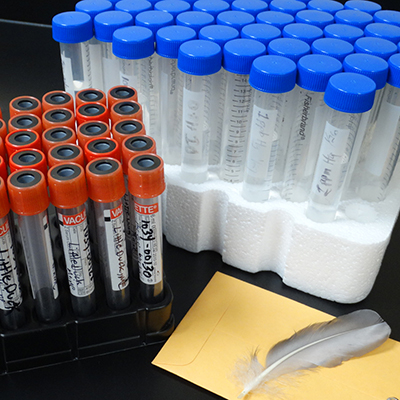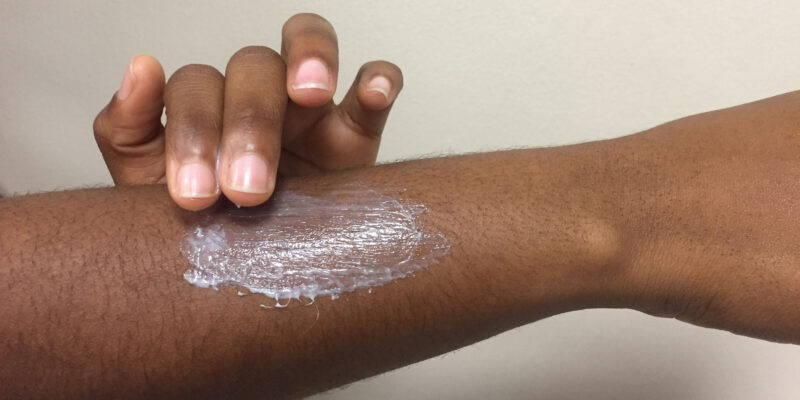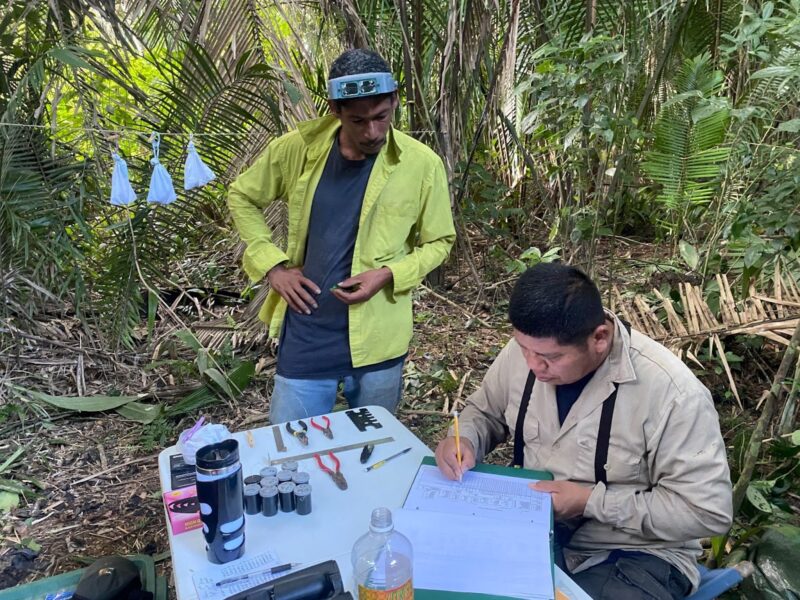 In BRI’s Toxicology Lab, our technicians analyze tissue samples for total mercury using a Nippon MA-3000 and for lead using our LeadCare® II analyzer. Tissue samples include feathers, fur, blood, muscle, and egg. Our sample processing capabilities include homogenizing samples using a centrifugal mill and freeze drying. Whole blood and post-mortem body fluids can be analyzed for mercury. The toxicology lab also uses XRF testing as a screening tool for other metals, and analyzes skin lightening products for total mercury.
In BRI’s Toxicology Lab, our technicians analyze tissue samples for total mercury using a Nippon MA-3000 and for lead using our LeadCare® II analyzer. Tissue samples include feathers, fur, blood, muscle, and egg. Our sample processing capabilities include homogenizing samples using a centrifugal mill and freeze drying. Whole blood and post-mortem body fluids can be analyzed for mercury. The toxicology lab also uses XRF testing as a screening tool for other metals, and analyzes skin lightening products for total mercury.
Our lab is certified as a BSL-2 and USDA certified. It has been satisfactorily evaluated during proficiency testing organized by the National Institute for Minamata Disease (NIMD) in collaboration with the United Nations Environmental Programme, Regional Office for Asia and the Pacific (UNEP-ROAP).
Lab Managers: Kevin Regan, M.S., Helen Yurek, B.S.
Assistant Lab Manager: Mark Burton, M.E.M.
In-house Lab Capabilities
 Mercury and Metals
Mercury and Metals
- Total mercury determination (using a direct thermal decomposition mercury analyzer, Nippon MA-3000)
- Lead ingestion and blood level determination (radiographic and blood analysis)
Tissue Analysis
- Tissue moisture determination (using a freeze dryer)
- Tissue homogenization (using a centrifugal mill)
Wildlife Necropsies
Biosafety Level 2 Capable
Satisfactory NIMD Lab Proficiency Testing Results
Wildlife Health Evaluation
External Capabilities
In addition to its own laboratory capabilities, BRI has established relationships with distinguished labs around the country for specialty work:
Mercury and Metals
- Dartmouth College
- Texas A&M
- University of Connecticut
Stable Isotopes
- Boston University
- Northern Arizona State
- University of Florida
- University of Washington
Genetics
- Buffalo State University
- University of New Hampshipre
PAH5
- University of Connecticut
Organics
- Texas A&M
- Wadsworth Center
Wildlife Health
- University of Vermont
Analyzing Mercury in Skin Lightening Products
 Inorganic mercury is a common ingredient found in skin lightening products (SLPs). The Minamata Convention on Mercury requires that Parties to the Convention phase out the manufacture, import, and export of certain mercury added products including cosmetics with mercury content above 1ppm. BRI’s toxicology lab analyzes skin lightening products for total mercury.
Inorganic mercury is a common ingredient found in skin lightening products (SLPs). The Minamata Convention on Mercury requires that Parties to the Convention phase out the manufacture, import, and export of certain mercury added products including cosmetics with mercury content above 1ppm. BRI’s toxicology lab analyzes skin lightening products for total mercury.
The Global Environment Facility (GEF) funded project Eliminating Mercury Skin Lightening Products aims to reduce the risk of exposure to mercury-added skin lightening products in both humans and the environment. The goal is to eliminate mercury-containing skin lightening products through initiatives that address the main needs for the management of SLPs, which include (but are not limited to) national capacity building on legislation, enforcement, laboratory capabilities, and awareness raising strategies.
BRI is collaborating with the World Health Organization (WHO) for the co-execution of the project which, is implemented by the United Nations Environment Programme (UNEP). For details and updates on project activities, please visit this site.
Minamata Convention and Regional Lab Capacity Building
 Laboratory networks for mercury and other contaminant analyses in regional hubs throughout the world, especially in mercury hotspots, will provide important information for the assessment of risk, both to humans and wildlife, in these environments. A Mercury Monitoring Network is important for helping countries that have ratified (or wish to ratify) the Minamata Convention on Mercury to meet their obligations and effectively implement its provisions.
Laboratory networks for mercury and other contaminant analyses in regional hubs throughout the world, especially in mercury hotspots, will provide important information for the assessment of risk, both to humans and wildlife, in these environments. A Mercury Monitoring Network is important for helping countries that have ratified (or wish to ratify) the Minamata Convention on Mercury to meet their obligations and effectively implement its provisions.
The development of an integrated network of toxicology laboratories will:
- Help facilitate countries with limited resources to be more efficient in evaluating the effectiveness of the Minamata Convention.
- Provide a way for countries to coordinate information about mercury in seafood for human and ecological health purposes, and to help build capacity within the region to make independent assessments.
- Help assist countries with sustainable economic activities related to seafood resources.
- Provide assistance to build capacity for relevant Ministries to protect human and ecological health.
Networks are in place or are being planned for the following regions:
Caribbean Region
Focal region: Antigua and Barbuda
Highlighted region: Belize
Central Africa
Focal region: Gabon
South America – NW
Focal regions: Colombia, Ecuador, Peru
Indo-Pacific
Focal region: Indonesia
Oceania
Focal region: TBD
Eastern Europe
Focal region: TBD
Photo Credits – BRI


